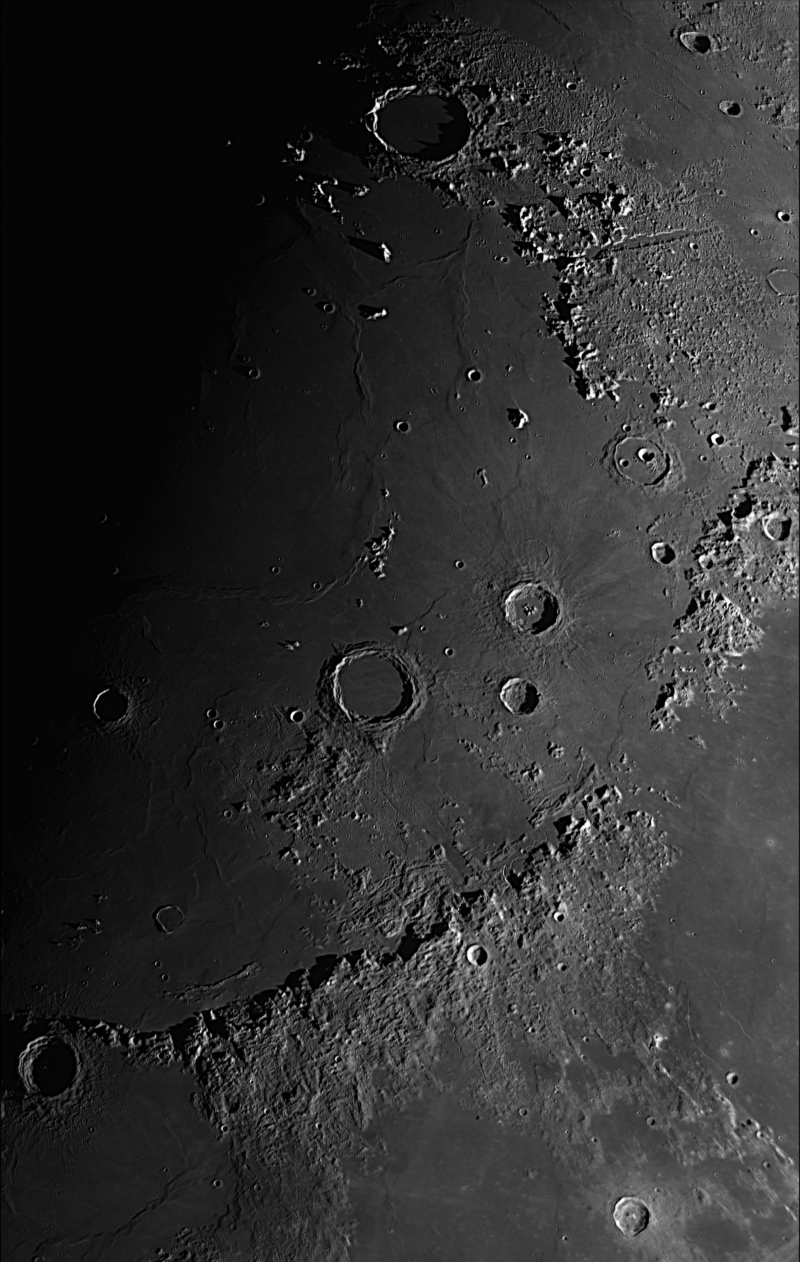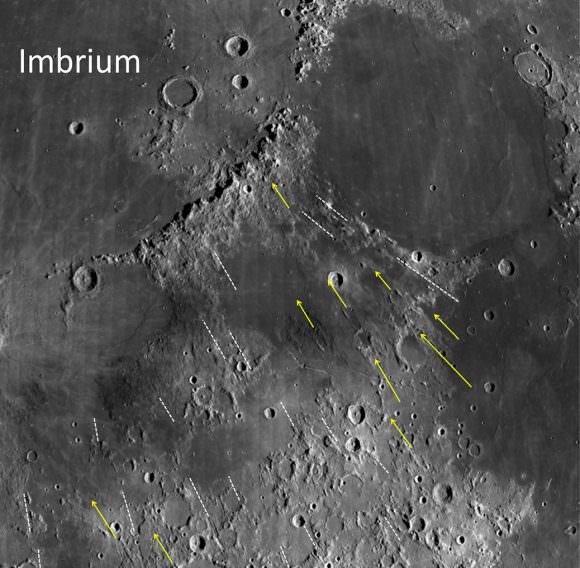
Good morning. It's November 16, and today we're looking very close to home, at our nearest celestial neighbor.
This strip of the Moon showcases the vast Mare Imbrium lava plain—it's the large semi-circle that dominates much of the photo. Astronomers and planetary scientists believe this feature formed when a proto-planet struck the Moon about 3.9 billion years ago.
Another striking feature of this photograph is the large Plato crater near the top. It has a diameter of 101 km, and if you look closely, you can see the long shadows cast by the mountainous terrain on the eastern rim of the crater. Wouldn't those peaks be fun to scale?
The photograph was submitted by Katie from Katie's Observing Log, and she captured this image with a Celestron NexStar 8-inch telescope.
"I set it up in my driveway on October 22nd," Katie told me. "We're suburban with lots of light pollution, but the Moon and planets are so bright that you don't have to worry about light pollution with them. I was planning on imaging Jupiter, but I had changed out some parts of the imaging setup so focus was way off. I pointed it at the Moon since that's about the easiest thing to focus on when you're way off. It happened to land on an interesting area."
Sometimes serendipitous astronomy is the best kind of astronomy.
Source: Katie's Observing Log.



3175x175(CURRENT).thumb.jpg.b05acc060982b36f5891ba728e6d953c.jpg)
Recommended Comments
There are no comments to display.
Join the conversation
You can post now and register later. If you have an account, sign in now to post with your account.
Note: Your post will require moderator approval before it will be visible.